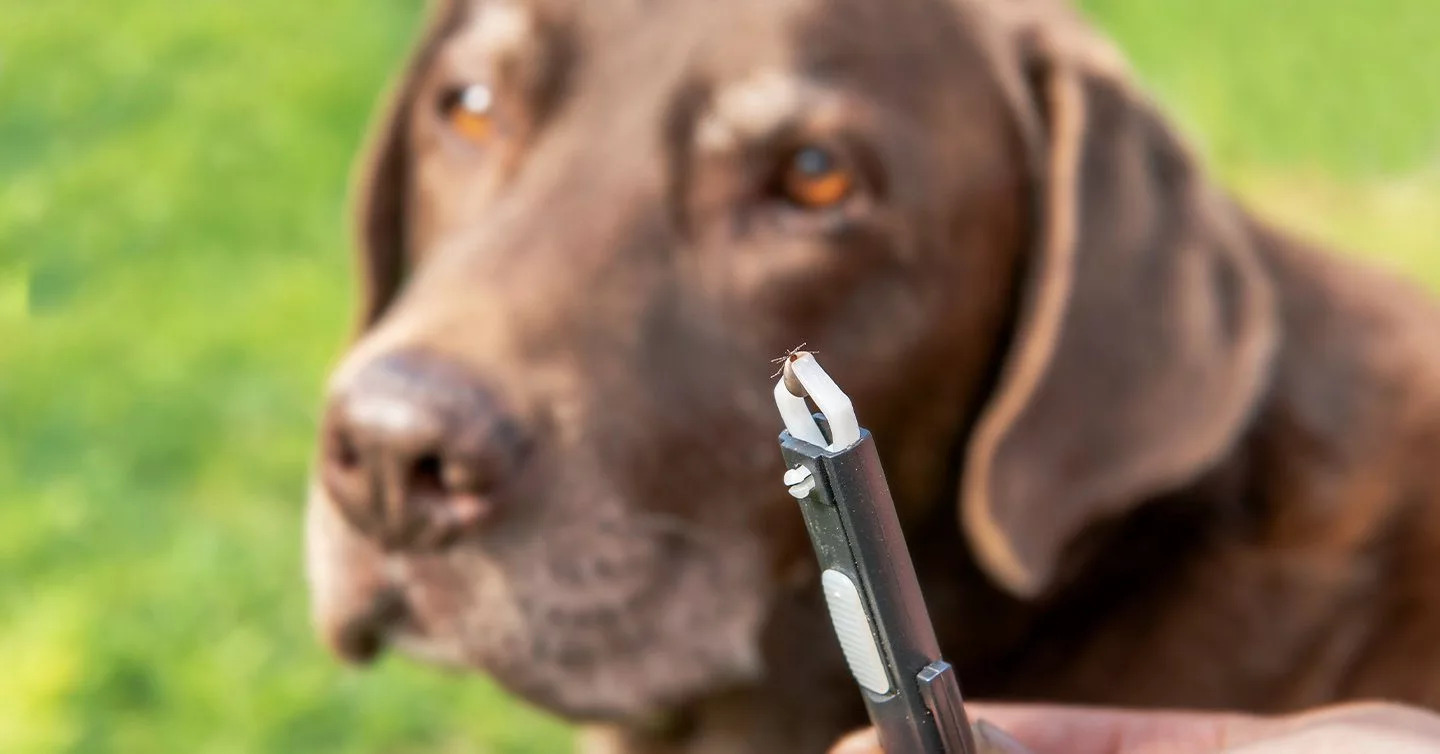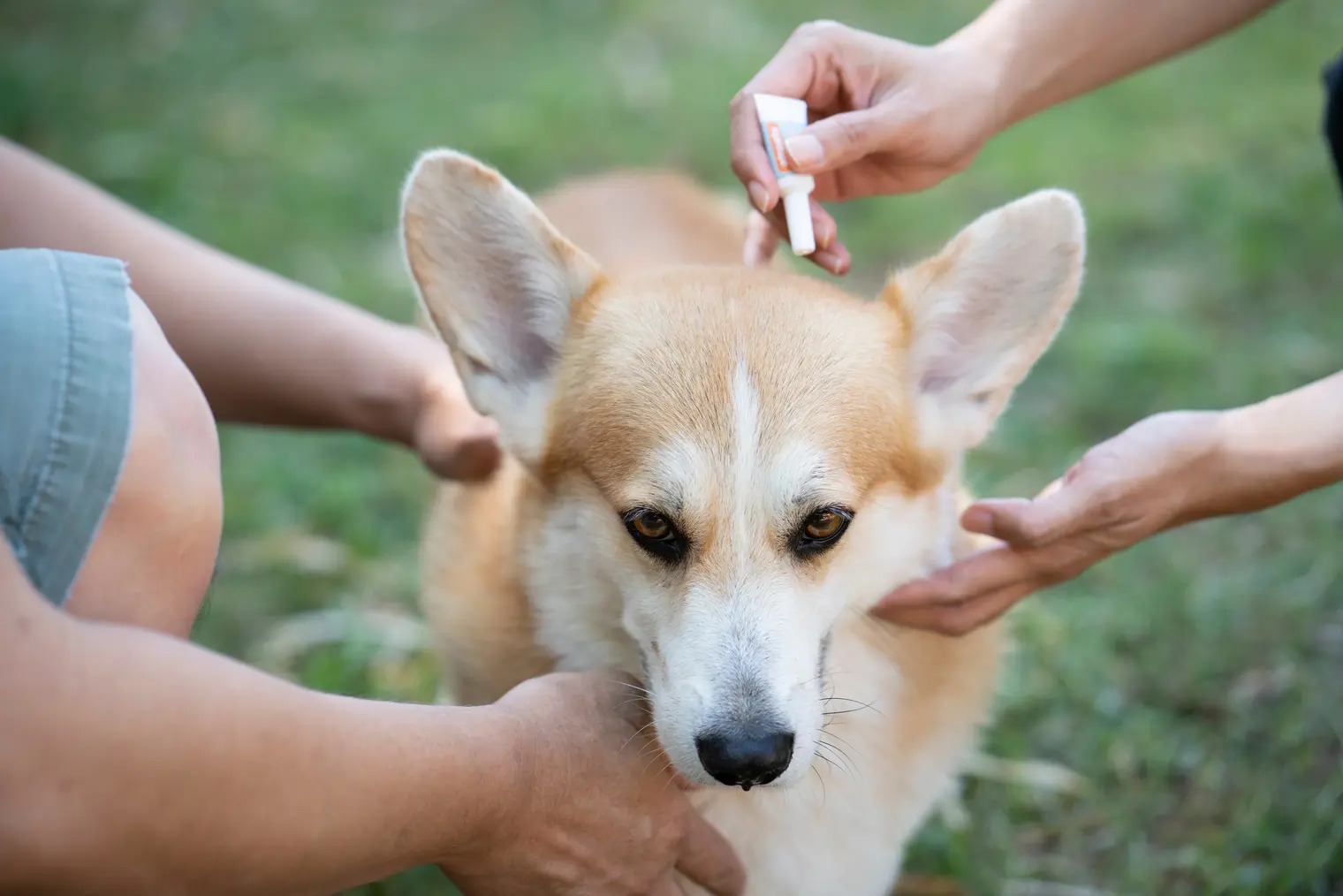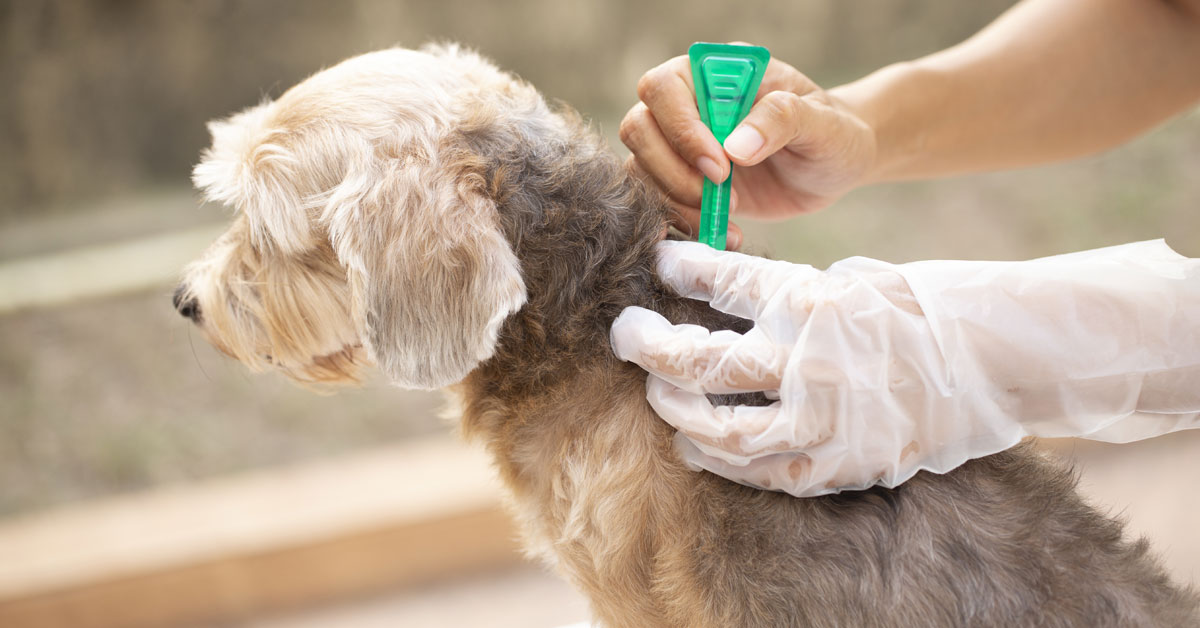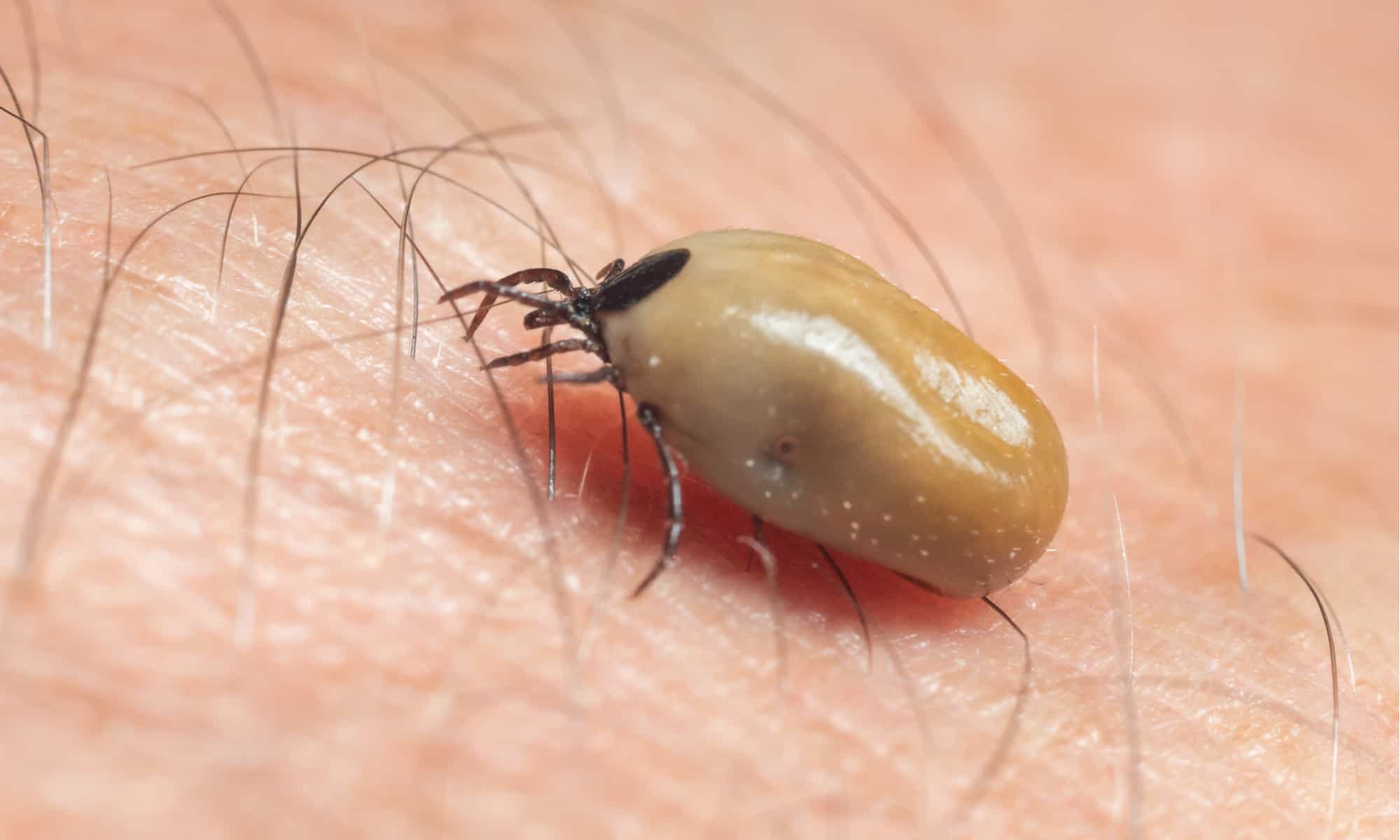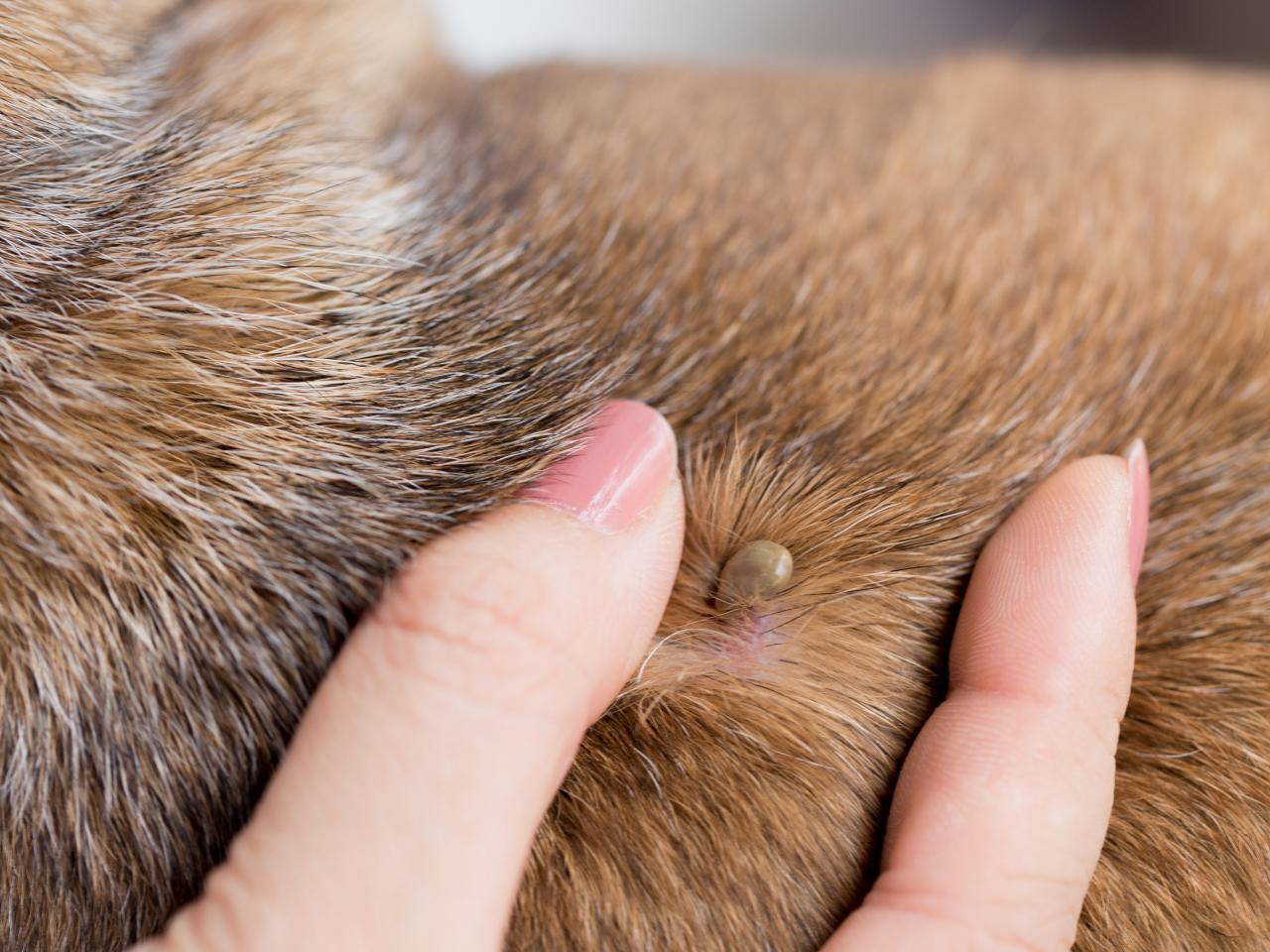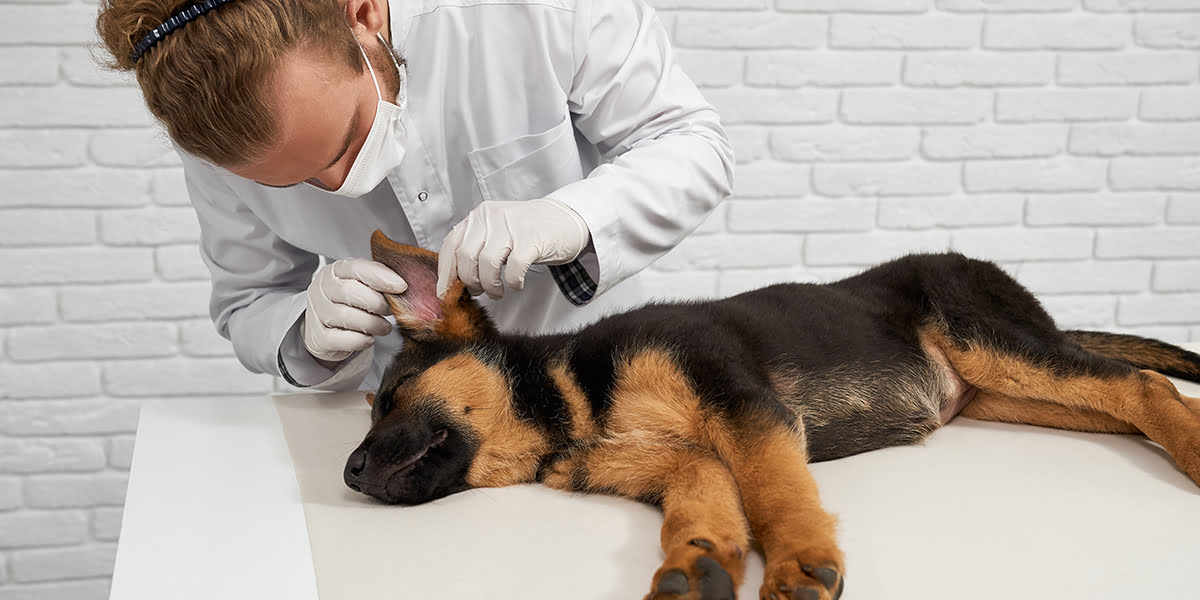Home>Health & Wellness>Common Health Issues>How To Find Ticks In Dogs
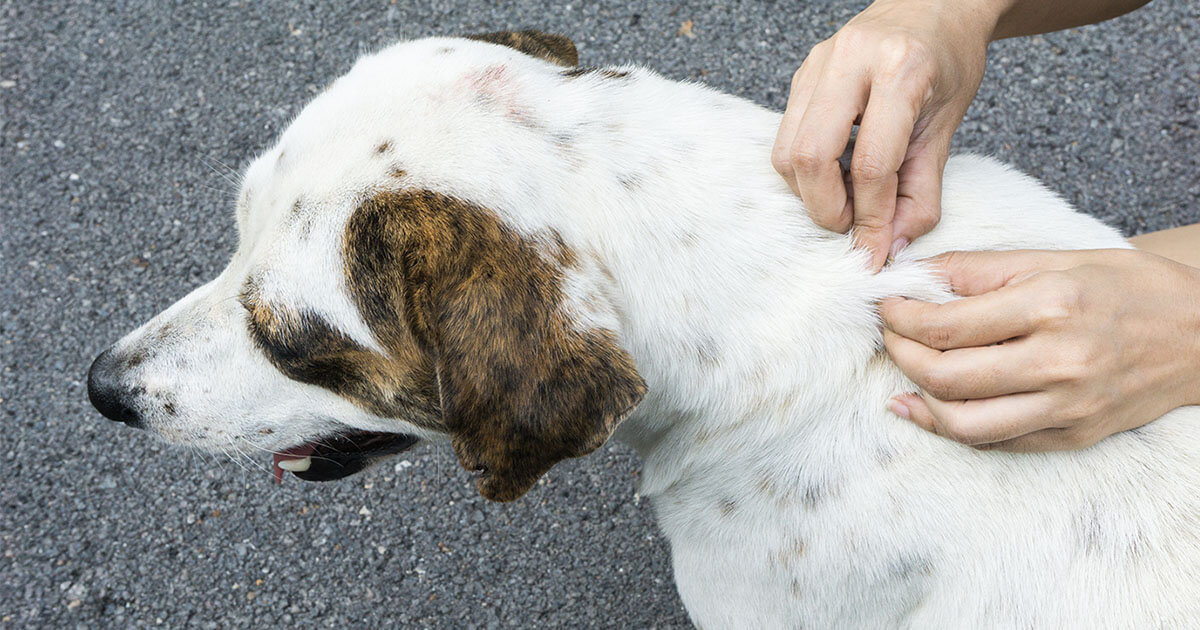

Common Health Issues
How To Find Ticks In Dogs
Modified: February 21, 2024
Learn how to identify ticks on dogs and prevent common health issues. Keep your furry friend healthy and happy with our expert tips.
(Many of the links in this article redirect to a specific reviewed product. Your purchase of these products through affiliate links helps to generate commission for Pawsomeoldies.com, at no extra cost. Learn more)
Table of Contents
Introduction
Ticks are tiny, blood-sucking parasites that can cause big problems for our furry friends. These pesky critters are not only a nuisance but also pose serious health risks to dogs. As a responsible pet owner, it's crucial to understand the dangers of ticks and how to protect your canine companion from these potential threats.
Ticks are commonly found in outdoor environments, such as wooded areas, tall grass, and shrubs. They latch onto animals, including dogs, and feed on their blood. In the process, ticks can transmit various diseases, including Lyme disease, Rocky Mountain spotted fever, and ehrlichiosis, among others. These illnesses can lead to a range of symptoms, from mild discomfort to severe health complications.
Given the potential harm that ticks can cause, it's essential for dog owners to be vigilant in preventing and addressing tick infestations. By learning how to identify, remove, and prevent ticks, you can safeguard your dog's well-being and ensure they lead a healthy, happy life.
In this comprehensive guide, we will delve into the world of ticks and their impact on dogs. We'll explore the signs and symptoms of tick infestations, provide step-by-step instructions for checking and safely removing ticks from your dog, and offer valuable tips for preventing future infestations. Additionally, we'll discuss when it's necessary to seek veterinary care for tick-related concerns.
By the end of this article, you'll have a thorough understanding of ticks and the necessary knowledge to protect your beloved canine companion from these troublesome parasites. Let's embark on this informative journey to ensure the well-being of our furry friends.
Read more: How To Find Affordable Dental Care For Dogs
Understanding Ticks and Their Dangers
Ticks are small arachnids that belong to the family Ixodidae. These parasitic creatures thrive in humid and warm environments, making them prevalent in outdoor areas such as forests, grassy fields, and gardens. Ticks are notorious for latching onto animals, including dogs, and feeding on their blood. While their size may be deceiving, the dangers they pose to our canine companions are significant.
One of the most concerning aspects of ticks is their ability to transmit various diseases to dogs through their bites. These diseases can have serious implications for a dog's health, ranging from mild discomfort to life-threatening conditions. Some of the most common tick-borne illnesses in dogs include Lyme disease, ehrlichiosis, anaplasmosis, Rocky Mountain spotted fever, and babesiosis, among others.
Lyme disease, caused by the bacterium Borrelia burgdorferi, is one of the most well-known tick-borne illnesses. It can lead to symptoms such as lameness, joint swelling, fever, lethargy, and loss of appetite. If left untreated, Lyme disease can cause kidney damage and other severe complications in dogs.
Ehrlichiosis, another dangerous tick-borne disease, is caused by several species of the Ehrlichia bacteria. This illness can manifest in acute, subclinical, and chronic phases, with symptoms including fever, lethargy, anemia, and bleeding disorders. If not promptly addressed, ehrlichiosis can have detrimental effects on a dog's overall health.
Rocky Mountain spotted fever, transmitted by the American dog tick and the Rocky Mountain wood tick, can cause fever, joint pain, neurological issues, and, in severe cases, organ failure. Babesiosis, caused by protozoa of the genus Babesia, can lead to symptoms such as pale gums, weakness, and anemia in affected dogs.
Understanding the potential dangers associated with tick infestations is crucial for dog owners. By recognizing the risks posed by these tiny parasites, pet parents can take proactive measures to protect their dogs from tick-borne diseases. In the following sections, we will explore the signs and symptoms of tick infestations in dogs, as well as effective strategies for checking for and safely removing ticks from our beloved canine companions.
Signs and Symptoms of Tick Infestation in Dogs
Identifying the signs and symptoms of tick infestation in dogs is crucial for timely intervention and effective management. While ticks themselves are visible to the naked eye, their presence on a dog's body may not always be immediately apparent. Therefore, understanding the potential indicators of tick infestations is essential for ensuring the well-being of our furry companions.
One of the most common signs of tick infestation in dogs is the presence of ticks on the skin. Ticks can attach themselves to various parts of a dog's body, including the ears, neck, paws, and between the toes. Upon close inspection, pet owners may notice small, dark-colored parasites embedded in the dog's skin. Additionally, some ticks may appear engorged after feeding on the dog's blood, making them more conspicuous.
Furthermore, dogs infested with ticks may exhibit symptoms such as excessive scratching, licking, or biting at the affected areas. This behavior is often a response to the discomfort caused by tick bites and can indicate the presence of ticks on the dog's skin. Persistent scratching or nibbling at specific areas, accompanied by redness or irritation, should prompt pet owners to inspect their dog for ticks.
In some cases, tick infestations can lead to skin irritation and inflammation. Dogs may develop red, inflamed patches on their skin, particularly in areas where ticks have latched on. These skin reactions can cause discomfort and distress for the affected dogs, prompting them to exhibit signs of discomfort and agitation.
Additionally, dogs suffering from tick-borne diseases may display a range of symptoms that signal underlying health issues. These symptoms can include fever, lethargy, loss of appetite, lameness, joint swelling, and in severe cases, neurological abnormalities. It's important to note that the onset and severity of these symptoms can vary depending on the specific tick-borne illness affecting the dog.
Observing changes in a dog's behavior, energy levels, and physical condition is crucial for detecting potential tick infestations and associated health concerns. By remaining vigilant and attentive to these signs and symptoms, pet owners can promptly address tick infestations and seek appropriate veterinary care for their beloved dogs.
In the subsequent sections, we will delve into the step-by-step process of checking for ticks on dogs and safely removing these parasites to mitigate the risks they pose to canine health.
How to Check for Ticks on Your Dog
Regularly checking your dog for ticks is a crucial aspect of preventive care, especially if your furry friend spends time in outdoor environments where ticks are prevalent. By conducting thorough tick checks, you can promptly identify and address any potential infestations, thereby safeguarding your dog's well-being. Here's a step-by-step guide on how to effectively check for ticks on your canine companion:
1. Choose a Well-Lit Area:
Begin the tick-checking process in a well-lit area to ensure optimal visibility. Natural light or a bright indoor space can help you spot ticks more easily as you examine your dog's coat and skin.
2. Run Your Hands Over Your Dog's Body:
Using gentle and deliberate motions, run your hands over your dog's entire body, paying close attention to areas where ticks are commonly found. These include the ears, neck, head, under the collar, between the toes, and around the tail and genital area.
3. Inspect Your Dog's Coat:
Carefully part your dog's fur to inspect the skin underneath. Ticks can hide amidst the fur, so thorough examination is essential. Look for any unusual bumps or dark spots that may indicate the presence of ticks.
4. Check for Engorged Ticks:
If you notice any small, dark-colored parasites attached to your dog's skin, examine them closely. Engorged ticks, which have fed on your dog's blood, may appear larger and more visible. Use a pair of fine-tipped tweezers to grasp the tick as close to the skin as possible.
5. Remove Ticks Safely:
If you find a tick, carefully remove it using the tweezers, ensuring that you grasp the tick's head and mouthparts. Gently pull the tick straight out, avoiding twisting or jerking motions. After removal, disinfect the area and wash your hands thoroughly.
6. Monitor Your Dog's Behavior:
After conducting a tick check, monitor your dog for any signs of discomfort, irritation, or unusual behavior. If you suspect that your dog has been bitten by ticks or is exhibiting symptoms of tick-borne illnesses, seek veterinary attention promptly.
By incorporating regular tick checks into your dog's grooming routine, you can effectively minimize the risks associated with tick infestations and ensure the ongoing health and happiness of your beloved pet. This proactive approach to tick prevention empowers pet owners to take proactive measures in protecting their canine companions from the potential dangers posed by these persistent parasites.
Removing Ticks Safely and Effectively
When it comes to removing ticks from your dog, it's essential to approach the process with care and precision to minimize the risk of injury or infection. Safely and effectively removing ticks from your canine companion requires attention to detail and the use of proper techniques to ensure the well-being of your pet. Here's a comprehensive guide on how to remove ticks from your dog in a safe and effective manner:
-
Gather the Necessary Tools: Before initiating the tick removal process, gather the essential tools, including fine-tipped tweezers or a tick removal tool, gloves, rubbing alcohol, and antiseptic ointment. Having these items readily available will streamline the removal process and help maintain a hygienic environment.
-
Prepare the Area: Choose a well-lit and comfortable space to conduct the tick removal procedure. Ensure that both you and your dog are positioned in a relaxed and stable manner to minimize any sudden movements that could disrupt the process.
-
Use Fine-Tipped Tweezers: Grasp the tick as close to the skin's surface as possible using fine-tipped tweezers. Avoid squeezing or crushing the tick, as this can cause it to release additional saliva, potentially increasing the risk of disease transmission.
-
Gentle, Steady Motion: With a firm and gentle grip, steadily pull the tick straight out, exerting even pressure. Avoid twisting or jerking motions, as these actions can cause the tick's mouthparts to break off and remain embedded in the skin, leading to potential infection.
-
Disinfect the Area: After successfully removing the tick, disinfect the bite site and your hands using rubbing alcohol or an antiseptic solution. Thoroughly clean the tweezers as well to prevent any potential contamination.
-
Monitor the Bite Site: Keep a close eye on the bite site for any signs of infection or inflammation in the following days. If you notice redness, swelling, or discharge, seek veterinary attention promptly to address any potential complications.
-
Dispose of the Tick: Once the tick has been safely removed, dispose of it carefully by placing it in a sealed container or bag. Avoid direct contact with the tick and ensure proper disposal to prevent any further contact with humans or pets.
By following these steps, you can effectively remove ticks from your dog in a safe and responsible manner, minimizing the risk of complications and promoting your pet's well-being. Additionally, maintaining a record of the date and location of tick removal can provide valuable information for monitoring your dog's health and identifying potential patterns of tick exposure.
Ensuring that your dog receives regular preventive measures, such as tick control products recommended by your veterinarian, can further reduce the risk of tick infestations and associated health concerns. By staying proactive and informed, you can play a pivotal role in safeguarding your dog from the potential dangers posed by ticks and promoting their overall health and happiness.
Preventing Tick Infestations in Dogs
Preventing tick infestations in dogs is a proactive and essential aspect of responsible pet ownership. By implementing effective preventive measures, pet owners can significantly reduce the risk of tick bites and the potential transmission of tick-borne diseases to their beloved canine companions. Here are valuable strategies for preventing tick infestations in dogs:
1. Use Tick Control Products:
Employing veterinarian-recommended tick control products, such as spot-on treatments, oral medications, and tick collars, can help deter ticks from latching onto dogs. These products are designed to repel ticks or eliminate them upon contact, providing a crucial line of defense against infestations.
Read more: How To Kill Ticks On Dogs
2. Maintain a Tidy Outdoor Environment:
Regularly mowing the lawn, trimming shrubs, and clearing leaf litter in the yard can help reduce tick habitats. By minimizing tall grass and creating a well-maintained outdoor space, pet owners can mitigate the risk of tick exposure for their dogs during outdoor activities.
3. Perform Routine Tick Checks:
Incorporate regular tick checks into your dog's grooming routine, especially after outdoor excursions. Thoroughly inspect your dog's coat and skin for any signs of ticks, paying close attention to common attachment sites such as the ears, neck, and paws. Promptly removing any detected ticks can prevent infestations and reduce the likelihood of disease transmission.
4. Consider Vaccination:
Consult with your veterinarian about the availability of tick-borne disease vaccines for dogs in your region. Vaccination can provide an additional layer of protection against specific tick-borne illnesses, bolstering your dog's immune system and reducing the severity of potential infections.
5. Limit Outdoor Exposure in High-Risk Areas:
When possible, minimize your dog's exposure to environments where ticks are prevalent, such as heavily wooded areas and tall grass. Opt for walks and outdoor activities in lower-risk locations to reduce the likelihood of encountering ticks.
6. Launder Bedding and Pet Accessories:
Regularly wash your dog's bedding, blankets, and other accessories to eliminate any ticks or eggs that may have been brought indoors. Maintaining a clean and hygienic living environment for your dog can help prevent tick infestations within the home.
7. Seek Professional Guidance:
Consult with a veterinarian to develop a comprehensive tick prevention plan tailored to your dog's specific needs and environmental factors. Veterinarians can provide valuable insights into effective preventive measures and recommend suitable tick control products based on your dog's health status and lifestyle.
By diligently implementing these preventive strategies, pet owners can significantly reduce the risk of tick infestations in dogs and promote a safe and healthy environment for their canine companions. Proactive tick prevention not only safeguards dogs from potential health threats but also enhances their overall well-being, allowing them to enjoy a vibrant and fulfilling life free from the burdens of tick-related concerns.
When to Seek Veterinary Care for Tick Infestations
While proactive measures can help prevent and manage tick infestations in dogs, there are instances where seeking veterinary care becomes imperative. Understanding when to involve a veterinarian in addressing tick-related concerns is crucial for ensuring the optimal health and well-being of your canine companion.
-
Persistent Tick Infestations: If you notice a persistent or recurring presence of ticks on your dog, despite diligent preventive efforts, it's essential to seek veterinary guidance. This may indicate underlying environmental factors or specific vulnerabilities that require professional assessment and targeted interventions.
-
Tick-Borne Disease Symptoms: Dogs exhibiting symptoms of tick-borne illnesses, such as fever, lethargy, lameness, and loss of appetite, should receive prompt veterinary attention. Timely diagnosis and treatment of tick-borne diseases are critical for mitigating potential complications and promoting the dog's recovery.
-
Tick Removal Challenges: In cases where tick removal poses challenges, such as ticks deeply embedded in the skin or broken mouthparts left behind, veterinary assistance is warranted. Veterinarians possess the expertise and specialized tools to safely and effectively address complex tick removal scenarios.
-
Allergic Reactions: Dogs may develop allergic reactions to tick bites, leading to severe skin inflammation, itching, and discomfort. Veterinary care can provide relief through appropriate medications and interventions tailored to manage allergic responses effectively.
-
Unusual Behavioral Changes: If your dog exhibits unusual behavioral changes following a tick infestation, such as persistent agitation, restlessness, or neurological abnormalities, consulting a veterinarian is essential. These signs may indicate underlying health issues that require professional evaluation and management.
-
Prolonged Discomfort: Dogs experiencing prolonged discomfort or irritation at tick bite sites should be evaluated by a veterinarian. Persistent inflammation or secondary infections resulting from tick bites necessitate veterinary assessment and targeted treatment to alleviate the dog's discomfort and promote healing.
-
Preventive Care Planning: Veterinary professionals can offer personalized guidance on developing comprehensive tick prevention plans tailored to your dog's specific needs and environmental factors. Their expertise in recommending suitable tick control products and preventive strategies is invaluable in safeguarding your dog's well-being.
By recognizing these scenarios that warrant veterinary care for tick infestations, pet owners can prioritize their dog's health and take proactive steps to address tick-related concerns effectively. Seeking timely veterinary assistance not only ensures the optimal management of tick infestations and associated health issues but also reinforces the commitment to providing the best possible care for our beloved canine companions.

